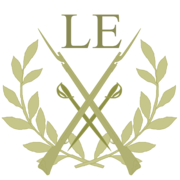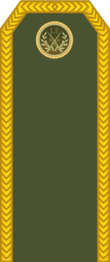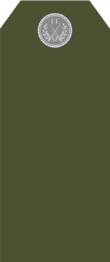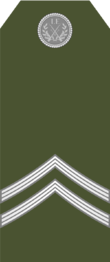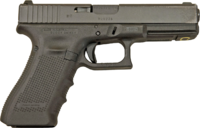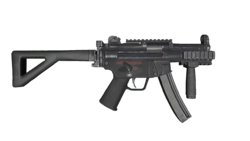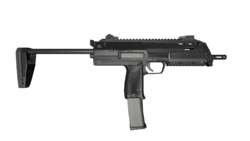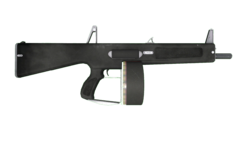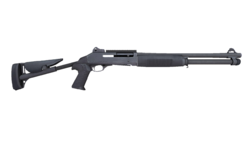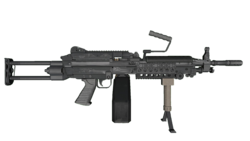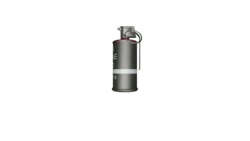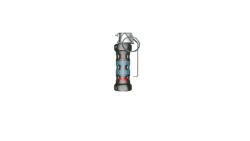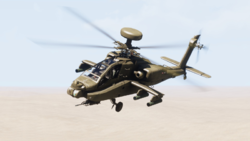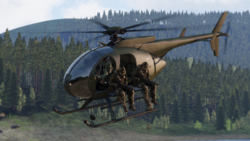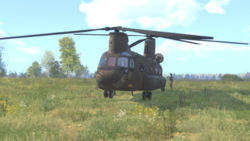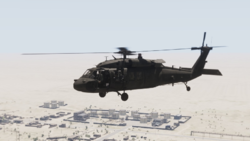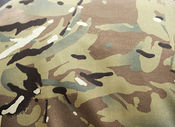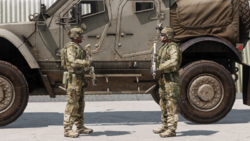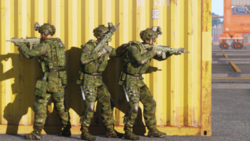Lauwiner Empire Legion
| Lauwiner Empire Legion | |
|---|---|
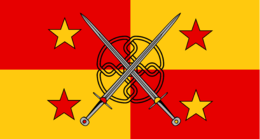 The Flag of the Empire Legion | |
| Active | 2017 - Present |
| Country | Lauwiner Empire |
| Type | Army / Navy |
| Role | Special Warfare |
| Size | 125 |
| Part of | House of Lauwiner |
| General Command | Imperia, Ukraine |
| Nickname | The Legion |
| Motto |
"nos defende populumo" ("we will defend our people") |
| Colors | Black, Gold, Red |
| March | Fight till the end |
| Commanders | |
| Field Marshal of the Empire Legion |
Jonas I of Lauwiner |
| General of the Empire Legion |
Lord Albert Delmore |
| Insignia | |
| Gold Insignia of the Empire Legion |
 |
| Silver Insignia of the Empire Legion |
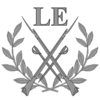 |
The Lauwiner Empire Legion, or Empire Legion. is the primary military of the Lauwiner Empire. The main role entrusted to the Empire Legion is to ensure national and internal security and protection for the top Regime personnel against internal opposition and to serve as a counterbalance against coup attempts by the regular Army.
Contents
- 1 Mission
- 2 Legionary Oath
- 3 Code of conduct
- 4 Organization
- 5 Field Marshal
- 6 Legion Officers School
- 7 Ideological-Political Training
- 8 Special Units Command
- 9 Territorial organization
- 10 Legion
- 11 Uniforms and insignia
- 12 Equipment
- 13 Small Arms
- 14 Vehicles
- 15 Aircraft
- 16 Attire
- 17 See also
- 18 Notes and references
Mission
The Lauwiner Empire Legion serves as the air, land and sea-based branch of the Empire Forces. Section 2005 of Title 6, Empire Code defines the purpose of the Legion as:
Preserving the peace and security and providing for the defence of Ironcastle and any areas occupied by Ironcastle
Supporting the national policies
Implementing the national objectives
Overcoming any nations responsible for aggressive acts that imperil the peace and security of Ironcastle
They are fully integrated into regular troops during national emergencies, from a few days to several months. Legionnaires can be engaged in military operations abroad, surveillance patrols and public security missions, and can combat crime or work in the spheres of health and cyber issues.
Despite its professionaism the legal status of the Legion at large can be more accurately described as a paramilitary rather than a strategic force, neither geared nor equipped towards the fighting or winning of wars, but to its duties of protection of the monarchy and where needs be, execution of armed services; the component units also have the missions of engaging hostile troops on Empire territory and eliminating local underground elements.
In general, expenses for the establishment and operation of the Legion are charged to the budget of the Empire Tax system.
Legionary Oath
Before being admitted in the Empire Legion, each aspirant must take the Legionary Oath; the Oath is the same for all ranks.
Oath:
I, Legionnaire of the Empire, swear to God who always serve with dedication and loyalty of to the Empire, my fellow companions and the Emperor;
I, Legionnaire of the Empire, swear before God that I wll carefully cultivate my political and military preparation, and that I will execute the orders of my superior officers and the Emperor.
I, Legionnaire of the Empire, am ready to defend with all power, the homeland and the people against all internal and external enemies.
Until the end!
I swear!
Code of conduct
Legionnaires are governed by general regulations which closely resemble regular military service regulations; according to these regulations, discipline and obedience are the foundations for each legionary unit. Punishments provided include the following:
- Reprimand in private;
- Reprimand in presence of superiors and announcement thereof to the unit;
- Prohibition of right to carry weapon;
- House arrest;
- Arrest and confinement;
- Demotion in rank;
- Prohibition of right to wear the uniform.
The Legionnaire, of any rank, incurs expulsion for slanderous allegations against superiors, for any type of corruption, for false services, for embezzlement, as well as deficiencies against honour or against the decorum of the Legion or reasons for which the Legionnaire does not give full guarantee of a faithful discharge of his duties or is placed in a position incompatible with the general political guidelines of the Empire. Recidivism in offences which are not sufficient for expulsion per se also can be grounds for expulsion.
Organization
The organization of the Legion consists of a General Command, which is in control of "Legion Field Corps".
Field Marshal
The Legions supreme commander is the Emperor and Fieldmarshal of the Lauwiner Empire. The emperor can use the strategic forcwe wereever he se fit.
General
The Commandant General of the Legion. is the General of the Empire the General needs to be apointed from the Emperor himself.
The rank of General of the Legion is defined in the Legion hierarchy as the 2. highest possible rank of the Legion. In this position, the General of the Legion can issue orders and commands to the Empire Legion. During wartime or within joint operations, the authority of the General of the Legion control some supply and logistics aspects of the Legion. The General of the Legion also holds authority to create new Spec. Ops. military units.
General Staff
- Organization Department
- Information Office
- Situation Section
- Public Order Office;
- Training Department;
- Personnel and discipline Department;
- Health Department;
- Administration Department;
- Political Office;
- Legal Affairs Office;
- Legion. Military Police Office
- Army Liaison Office;
- Public Security Liaison Office;
- Civil Protection and Technical Emergency Liaison Office;
- Press Office
Information Office: Legion. Bulletins
The Information Office is the branch of the General Command tasked with the centralized direction of the Political Offices of Investigation. The bulletins of the Information Office of the General Command are typewritten police reports, which are prepared daily and sent in confidence to the Duce, the Commandant General and a few other leaders. The news sent by provincial legions (Political Offices of Investigation) are collected from the General Command, which provides for the drafting of the bulletins, sorting breaking news and information by geographic area and by topic:
- "Abstention from work or strikes,"
- "Subversive and anti-national activities,"
- "Military News"
- "News received in the last hour"
- "Operations against bandits and rebels"
- "Public Order and public spirit"
- "Confidential notes and reminders"
- "Attachments"
- "Miscellaneous".
Legion Officers School
The loftiness and complexity of the tasks entrusted to a Permanent Officer of the Legion needs the entailment of a qualified professional training, supported by a broad general education, while extolling the Empires values: the activity of the Legion. Officers School (Italian: Scuola Ufficiali della Legion.), reporting directly to the General Command of the Militia, is therefore fundamental and over the years it has evolved constantly. The fundamental objective of the Officers School is the training of future Permanent Officers and Commanders through the Application courses (lasting three years after the two years of the regular E.N.R. Military Academy which every Permanent Officer must attend), which is associated with the political and professional development along the career. The Legion. Officers School fulfils also the functions of a think tank, proposing research and development of professional and political issues.
Organization
The Officers School of the Militia is commanded by a Legion. Lieutenant General (who is also in charge of all training activities), and is structured on:
- Officers School Staff, which assists and advises the Commander in the operation of ordinary activities and planning of complex issues;
- Institute of Professional and Political-Military Studies, established in September 2000 with the aim to ensure better coordination of civilian and military education of teachers (next to the existing courses of Professional Techniques, Staff Service and Security Techniques, the following courses were established: Informatics, Military Law, Military Security, Territorial Control, Art of Military Operations, Security Keeping, Administration, Logistics and Military Medicine);
- Students Cohort, which takes care of the framing of students, contributing to their moral, political, ethical and military education.
Educational content
The educational commitment is further increased with the establishment of new roles and with the changes of curricula for officers: from the Academic Year 1994/1995, in fact, Officers coming from the Military Academy in Modena integrate the five-year training with graduation course in Science of internal and external security at the University of Rome Tor Vergata; in the same University, Officers can graduate in Law. By the school is provided a quarterly magazine in political-professional, the Review of the Militia (It: Rassegna della Milizia), established to update the preparation of the Legionaries, offering their insights concerning the development of fascist thinking and professional disciplines of interest and reviews of various books.
The school has always had intense international relations and exchanges with foreign institutes and academies.
Ideological-Political Training
The values that are established in the Empire are trained and teached to all candidates of the Legions officers school.
Special Units Command
The Legion maintains some specialized units to be used security tasks. These may be the Emperors security units, as well as special operations forces. All special units outside the General Command, Specialities and Legions are grouped under the Special Units Command.
Legions Special Intervention Group
The Legions Special Intervention Group is a special operations unit of the Legion. and is trained to perform counter-terrorist and hostage rescue missions all over the world. The L.S.I.G was formed in 2018.
Alongside with the Command and Support Squad, there are three distinct parts to the unit:
- Intervention force
- Observation & search force
- Security & protection force
Territorial organization
The organizational structure of Legion units and the training they receive varies from one province to another, according to the nature and severity of the potential threats identified by the Legion commanders in different regions. Legionnaires are employed against drug traffickers or border-guard duties, also in addition to the proper Speciality.
Legion
The Legion. Legion is the basic organizational element. It has a provincial-related jurisdiction, and each Legion manages all Legion. activities within its Province, ranging from protection of local P.N.F. facilities and headquarters, territorial political security, presence to public order, public security and civil protection support activity. Each Provincial Legion has its own "honour title".
The Legion. of both the Italian Provinces and of the other Realms of the Italian Empire serves as part of the first-line of Regime defence and security. The provincial Militia is organized and operates under their respective Prefect or Lieutenant General of the Realm (and under relevant territorial governors according to the government of the relevant State), as well as under their local Party leaders. Prefects (in Italy) exercise control through the Quaestors and the P.N.F. Provincial Federal Secretary. Outside the Party hierarchy, the Legion. may be called up for active duty by a variety of bodies and figures: Prefects, local military authorities and the Minister of Interior to help respond to domestic emergencies and disasters, such as riots and civil disorder, unrest, revolts, hurricanes, floods, and earthquakes. The Legion. units are trained to be local combat units (primarily infantry but also signal troops). Although current doctrine states that Legion. units can act anywhere within Italy, local knowledge is one of the strengths of the organization. Training focuses on guard duties and weapons proficiency.
During wartime, permanent personnel of each Legion form infantry units attached to the Army; Legion. officers act as Army officers within the Legion. units. However, during wartime the vast majority of Cadres personnel is mobilized as ordinary part of the Armed Forces. During military actions other than major wars, whole Legions can be recalled as Legion. formations and transformed into combat units; in this case, each Legion forms an Infantry Battalion-level unit (down to early Regiment-level formation). Moreover, Legions are in charge also of Local Police Corps, which are recruited among Legion, personnel; however, Local Police are not part of the Provincial Legions.
Each Legion has an average strength of 1,000 men; however, the Legion of Rome has three times the average Legionnaires numbers, while Legions of Milan, Naples, Palermo and Cagliari are twice the average Legion size.
During peacetime, Legions' primary task is the territorial presence, organized trough a garrisons and detachments network, in order to watch over political stability and over police forces.
The whole complex of the Provincial Legions, at any point of the year, deploys in active service 123,000 Legionnaires: from this number, however, are excluded all Specialities. The presence of 123,000 Legionnaires at any point of year means that the Provincial Legions (sometimes dubbed as "Territorial Militia") have a total rotation of 450,000 Legionnaires with a permanent cadre of 18,000 Legionnaires all across Italian Provincial Legions.
Each Provincial Legion is commanded by a Seniore (equivalent to a Colonel), who directs all offices subordinated to the Legion Command, in turn held by a Prime Tribune (It: Primo Tribuno, corresponding to a Lieutenant Colonel), who also acts as Commander's deputy. Offices and Services are each commanded by a Tribune (It: Tribuno, equivalent to Major) or a Maniple Chief (It: Capomanipolo, Captain). All commanders and staff teams are of permanent service, while troops and platoon leaders are Cadres.
Territorial Units
Territorial Detachments are frequently head-quartered near to large State factories, in order to "defend the property of the Italian people", while Garrisons are based next to large provincial centres, and usually carry out general and political police surveillance duties. The Detachment Commander (a Maniple Chief) has a Political Deputy (It: Delegato Politico, belonging to the PNF) and a Deputy Commander, plus a supply officer and a chief medical orderly. Other personnel include the four platoon leaders, four deputy platoon leaders, 184 Legionnaires and four medical orderlies (one per platoon). Each Detachment has one or more Station, tasked with rural and public security surveillance; these Posts are manned by permanent-service Legionnaires. The Territorial Detachments and Garrisons also ensure that civilian companies and authorities continue operating during times of crisis or catastrophe.
Wartime organization
During wartime and in case of danger of a national invasion, the provincial organization radically changes its organization and assets in order to replace military personnel under arms. Legion. units during wartime are placed under direct command of the local PNF. Though normally under party control, the "War Militia" units are placed under Army command when engaging in action. The basic unit is a War Cohort of 642 men. Units are mostly composed of members of the GIL, invalids, the elderly, or men who had previously been considered unfit for military service:
- A War Cohort (Battalion) in every Province;
- A War Maniple (Company) in every Administrative District (It: Circondario Amministrativo)
- A Platoon in every Subdistrict (It: Mandamento)
Each Federal Secretary has a Legion. Chief of Staff to assist him in handling militia problems. Such units guard economic and strategic installations, assisted with Civil Defence and police units, help maintain public order, assist as auxiliary frontier customs agents, etc.
Uniforms and insignia
The Legion and its subcomponents have a complete set of rank insignia, military badges and military uniforms, in order to display the unity of action of every member and body; this improves the esprit de corps, and contributes to the identity formations of both the collective body (as opposed to the Legion and in general to the Lauwiner Empire) and the individual member, because an uniform is the best media by which deliver the message of belonging to a particular Corps or political militia.
Ranks and insignia of the Empire Legion
The Empire Legion and its subcomponent (Empire Intelligence) are military-organized bodies and have complete ranks and uniforms. While the Empire Legion has retained the orginal rank structure of its founding years the Empire Intelligence has adapted those ranks.
| Empire Legion Special Ranks insignia | ||
|---|---|---|
| Special rank | General Генерал Général |
Feldmarschall Маршал Maréchal |
| English translation | General | Field marshal |
| Rank NATO code | OF-9 | OF-10 |
| Shoulder board insignia | 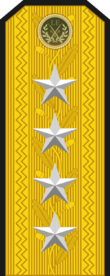 |

|
Ordinary and Full Uniform
The Ordinary Uniform is worn both in service only for part-time units and both in service and out of service for permanent personnel. The jacket is in twill and has the form prescribed for the Army, with black buttons which have the "RSI" cyphers. The neck is opened and black cloth-trimmed, adorned with the relevant insignia. The hand guards are red. The four pockets are of patch-type, with central torch and flaps. The shoulder boards bear the rank insignia.
The shirt is black and his tie is in black rayon. The trousers are riding short pants, with double black stripes; also long trousers without bands are provided. The cap is in grey-green twill fabric and bears the frieze of the Militia; alternatively is worn the fez of the Legion. Finishing touches: blacks boots with spurs or shoes depending on the type of used trousers and black leather gloves.
In winter the Legionnaire wears the mantle of black fabric, with the same cut prescribed for Army officers, that is up to 20 cm long below the knee, double-breasted and closed by a double row of three large buttons silver; the two slit pockets are closed by the same number of fins and, for officers, below the left side there is an opening to allow the passage of the pendants of the flakes of the garnet red officer scarf which is always worn over the jacket.
The Full Uniform is based on the Ordinary Uniform, with the adding of some items, namely the officer scarf, the black belt (with golden trims for officers) and the Squadrist dagger.
Service Uniform
The Service Uniform (It: Uniforme di Servizio) consists of a pattern simpler than the Ordinary Uniform; this is the most common uniform and it is widely used. All personnel wear black cargo trousers, black shirt and black infantry combat boots. The shirt may be long or short sleeved according the season, and has two patch-style breast pockets; the winter shirt is in heavy wool specifically treated. Under ordinary circumstances the cap which is used is the beret, but if required by the situation also the helmet can be worn.
Units deployed in mountain areas with particularly cold climates use a black sweater instead of the black shirt, and wind-breaker jacket with heavy internal lining. The sweater can replace the shirt even in public order, patrolling, manhunts and round-ups services.
Equipment
The lauwiner Empire Legion on its own (separated from the Empire Intelligence) has both civilian and military equipment for the fulfilment of its duties. Most of the heavy equipment is not owned by the Lauwiner Empire Legion but more rented in different sets for each specific operation or strike. Following equipment is standard operation equipment used worldwide.
Small Arms
Vehicles
| Model | Image | Origin | Numbers | Details | ||
|---|---|---|---|---|---|---|
| HMMWV | 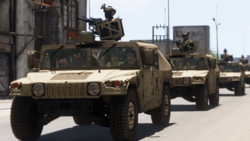 |
U.S.A | Unknown | |||
| Trucks | ||||||
| HEMTT | 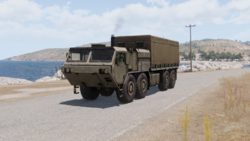 |
U.S.A | Unknown | |||
| MTVR | 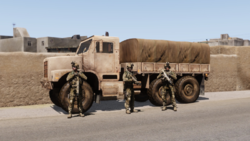 |
U.S.A | Unknown | |||
| Armoured Vehicles | ||||||
| M1 Abrams | 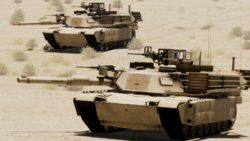 |
U.S.A | Unknown | Only rented, not owned | ||
| M1117 ASV | 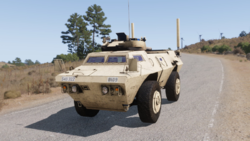 |
U.S.A | Unknown | |||

